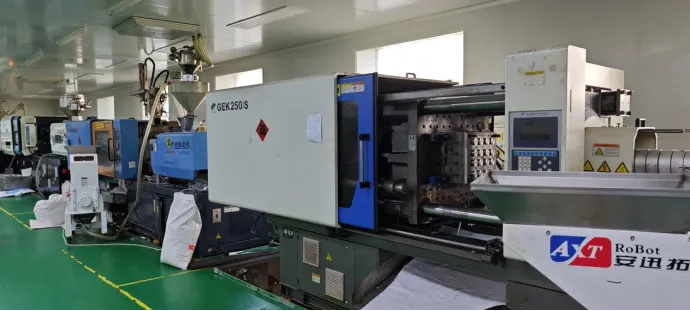
-
 Afrikaans
Afrikaans -
 Albanian
Albanian -
 Amharic
Amharic -
 Arabic
Arabic -
 Armenian
Armenian -
 Azerbaijani
Azerbaijani -
 Basque
Basque -
 Belarusian
Belarusian -
 Bengali
Bengali -
 Bosnian
Bosnian -
 Bulgarian
Bulgarian -
 Catalan
Catalan -
 Cebuano
Cebuano -
 Corsican
Corsican -
 Croatian
Croatian -
 Czech
Czech -
 Danish
Danish -
 Dutch
Dutch -
 English
English -
 Esperanto
Esperanto -
 Estonian
Estonian -
 Finnish
Finnish -
 French
French -
 Frisian
Frisian -
 Galician
Galician -
 Georgian
Georgian -
 German
German -
 Greek
Greek -
 Gujarati
Gujarati -
 Haitian Creole
Haitian Creole -
 hausa
hausa -
 hawaiian
hawaiian -
 Hebrew
Hebrew -
 Hindi
Hindi -
 Miao
Miao -
 Hungarian
Hungarian -
 Icelandic
Icelandic -
 igbo
igbo -
 Indonesian
Indonesian -
 irish
irish -
 Italian
Italian -
 Japanese
Japanese -
 Javanese
Javanese -
 Kannada
Kannada -
 kazakh
kazakh -
 Khmer
Khmer -
 Rwandese
Rwandese -
 Korean
Korean -
 Kurdish
Kurdish -
 Kyrgyz
Kyrgyz -
 Lao
Lao -
 Latin
Latin -
 Latvian
Latvian -
 Lithuanian
Lithuanian -
 Luxembourgish
Luxembourgish -
 Macedonian
Macedonian -
 Malgashi
Malgashi -
 Malay
Malay -
 Malayalam
Malayalam -
 Maltese
Maltese -
 Maori
Maori -
 Marathi
Marathi -
 Mongolian
Mongolian -
 Myanmar
Myanmar -
 Nepali
Nepali -
 Norwegian
Norwegian -
 Norwegian
Norwegian -
 Occitan
Occitan -
 Pashto
Pashto -
 Persian
Persian -
 Polish
Polish -
 Portuguese
Portuguese -
 Punjabi
Punjabi -
 Romanian
Romanian -
 Russian
Russian -
 Samoan
Samoan -
 Scottish Gaelic
Scottish Gaelic -
 Serbian
Serbian -
 Sesotho
Sesotho -
 Shona
Shona -
 Sindhi
Sindhi -
 Sinhala
Sinhala -
 Slovak
Slovak -
 Slovenian
Slovenian -
 Somali
Somali -
 Spanish
Spanish -
 Sundanese
Sundanese -
 Swahili
Swahili -
 Swedish
Swedish -
 Tagalog
Tagalog -
 Tajik
Tajik -
 Tamil
Tamil -
 Tatar
Tatar -
 Telugu
Telugu -
 Thai
Thai -
 Turkish
Turkish -
 Turkmen
Turkmen -
 Ukrainian
Ukrainian -
 Urdu
Urdu -
 Uighur
Uighur -
 Uzbek
Uzbek -
 Vietnamese
Vietnamese -
 Welsh
Welsh -
 Bantu
Bantu -
 Yiddish
Yiddish -
 Yoruba
Yoruba -
 Zulu
Zulu
Different Types of Sample Collection Tubes for Laboratory Use and Their Applications
Understanding the Types of Sample Tubes
Sample tubes play a pivotal role in laboratories, particularly in fields such as clinical diagnostics, research, and pharmaceutical development. These tubes are designed to collect, transport, and store biological and chemical samples under various conditions. The choice of the right type of sample tube is crucial for maintaining the integrity of the samples and obtaining accurate results. In this article, we will explore the various types of sample tubes, their purposes, and the considerations to keep in mind when selecting them.
1. EDTA Tubes
Ethylene Diamine Tetraacetic Acid (EDTA) tubes are commonly used for collecting blood samples. EDTA is an anticoagulant that prevents blood from clotting, making these tubes ideal for hematological tests. They are typically lavender or purple in color and are frequently used in complete blood count (CBC) tests and blood smears. When using EDTA tubes, it is essential to mix the blood with the anticoagulant thoroughly to ensure accurate results.
2. Citrate Tubes
Citrate tubes, which usually have a blue cap, contain sodium citrate as their anticoagulant. These tubes are primarily used for coagulation tests, such as prothrombin time (PT) and activated partial thromboplastin time (aPTT). The ratio of blood to anticoagulant is critical in achieving accurate coagulation results, so it is vital to fill these tubes to the specified level.
Heparin tubes are distinguished by their green caps and contain heparin as an anticoagulant. They are widely used for various blood tests, including chemistry assays where rapid plasma separation is required. Heparin tubes allow for quick processing, making them suitable for tests that must be conducted promptly.
types of sample tubes

4. Serum Separator Tubes (SST)
SST tubes are identified by their gold or orange tops and contain a gel that separates serum from cells during centrifugation. These tubes are beneficial for serum tests because they provide a clean sample without cellular contamination. They are commonly used for biochemical analyses, hormone testing, and various other diagnostic evaluations.
5. Blood Culture Bottles
Blood culture bottles are specialized containers used to detect the presence of pathogens in the bloodstream. These bottles can be aerobic or anaerobic, and they are essential for diagnosing infections. Properly collecting and transporting samples in these bottles is critical for identifying the bacteria or fungi causing the illness.
6. Plastic vs. Glass Tubes
While many sample tubes are made from plastic, glass tubes are commonly used for certain applications, especially where chemical interactions could affect results. Glass tubes are non-reactive and can be used for skin cultures and microliter pipetting. However, plastic tubes have become more popular due to their lightweight nature and decreased risk of shattering.
Conclusion
Selecting the right type of sample tube is vital for ensuring the accuracy and reliability of laboratory results. Awareness of the various tubes available, their specific applications, and the proper handling techniques can significantly contribute to improved diagnostic practices. As laboratory technology continues to evolve, understanding these fundamental tools remains essential for professionals in the medical and scientific communities.
-
Premium Metal Dropper Bottle for Precise Dispensing 250ml & 1ml Options AvailableNewsJul.04,2025
-
20 ml Headspace Vials - High Quality Polyethylene & Plastic Vials for Lab UseNewsJul.04,2025
-
Small Bottle with Pipette - Precise Dispensing 100ml Pipette Bottles for Essential Oils & Lab UseNewsJun.24,2025
-
Acetic Anhydride Bottle for Accurate Dropper Measurement in Pharmacy Use High-Quality Dropper BottlesNewsJun.10,2025
-
Innovative PET Bottle Design for Juice – Unique Shapes & Customization OptionsNewsJun.10,2025
-
20 Pack Sterilized Petri Dishes – Assorted Sizes, High Quality Small Plastic Petri Dishes for Lab UseNewsJun.10,2025






















